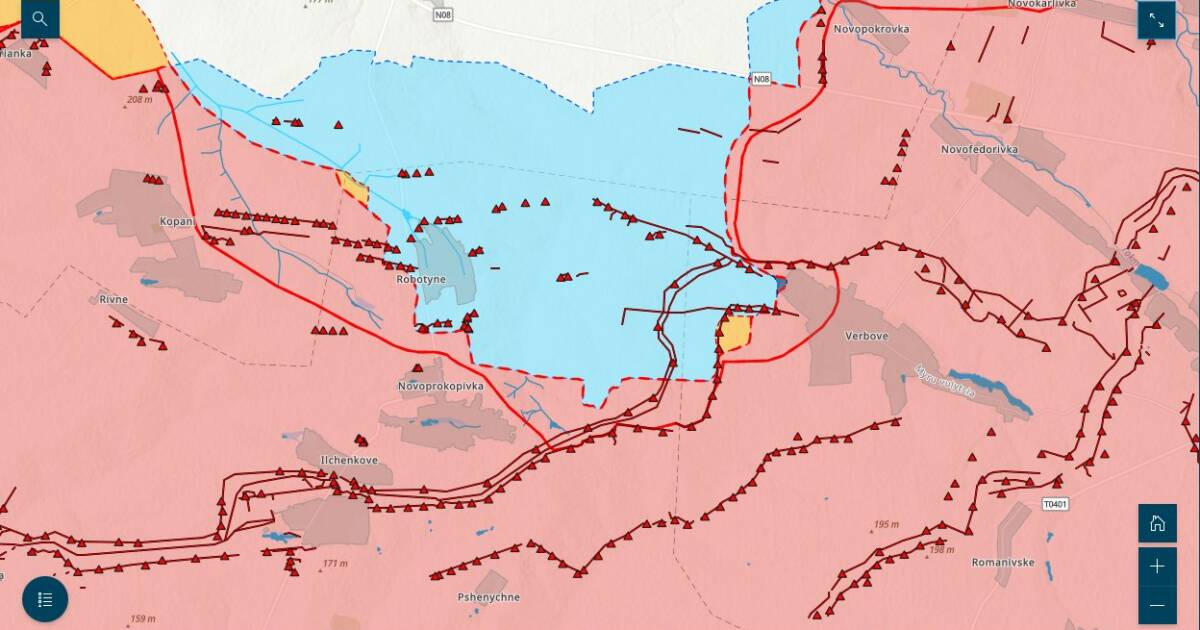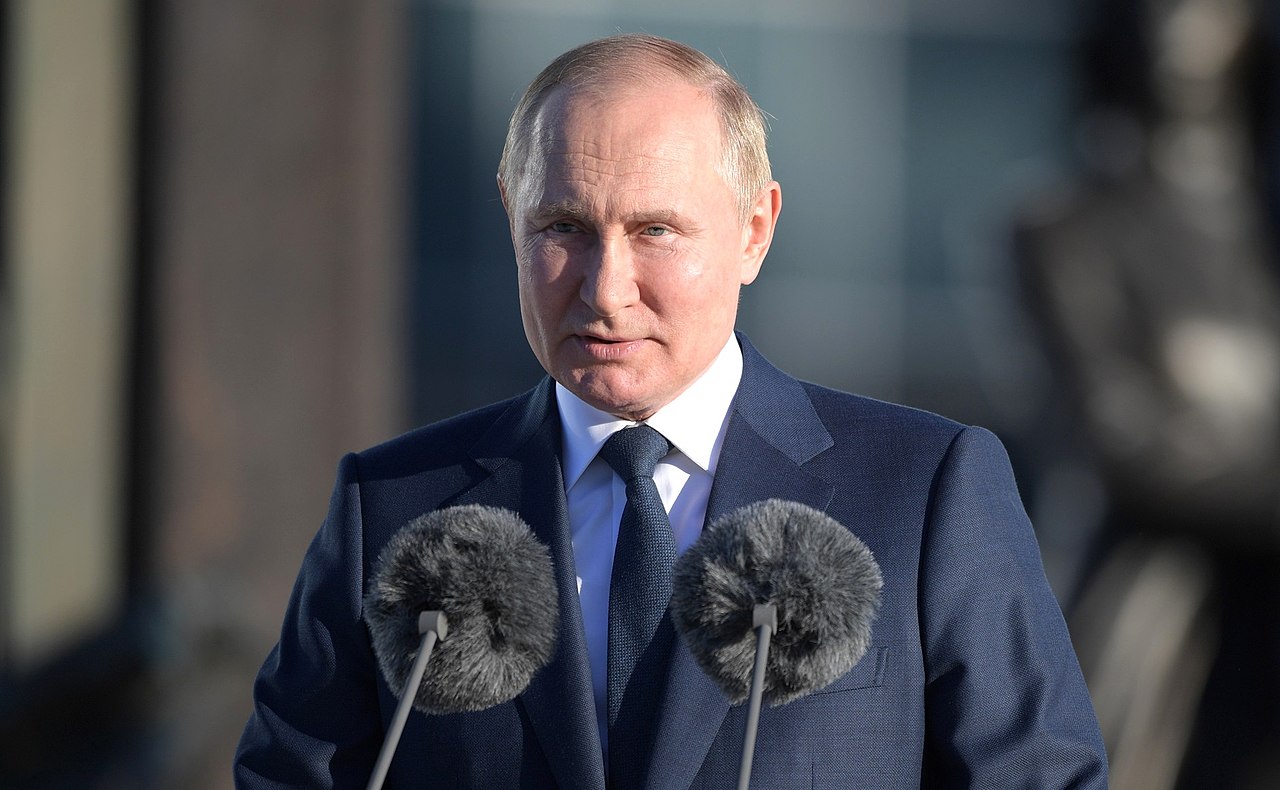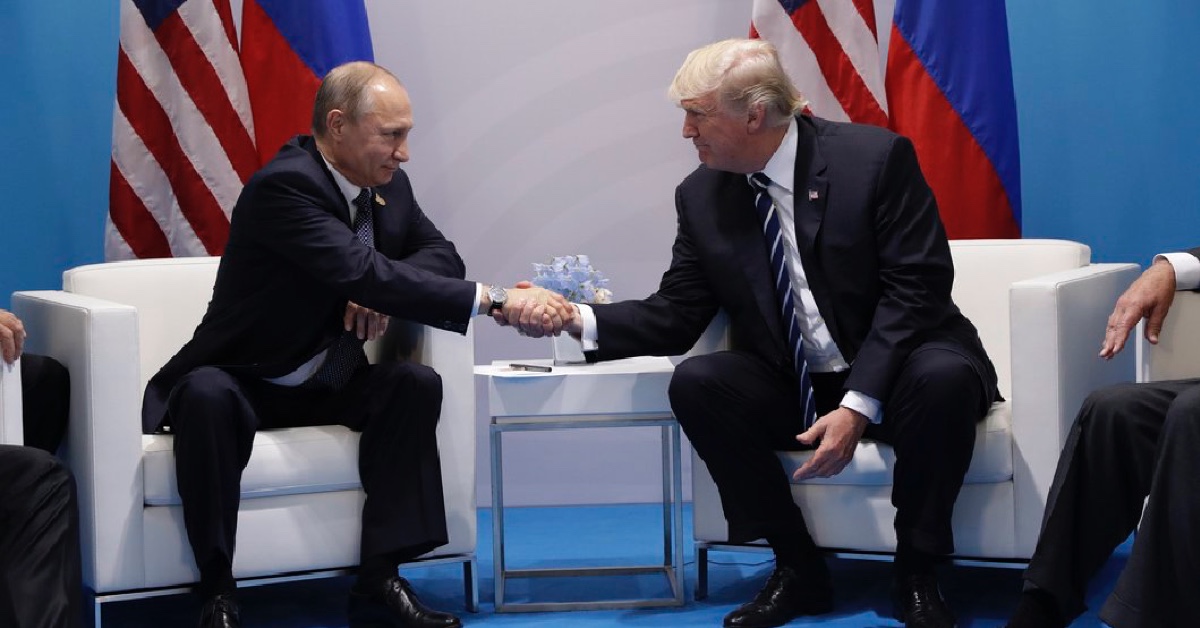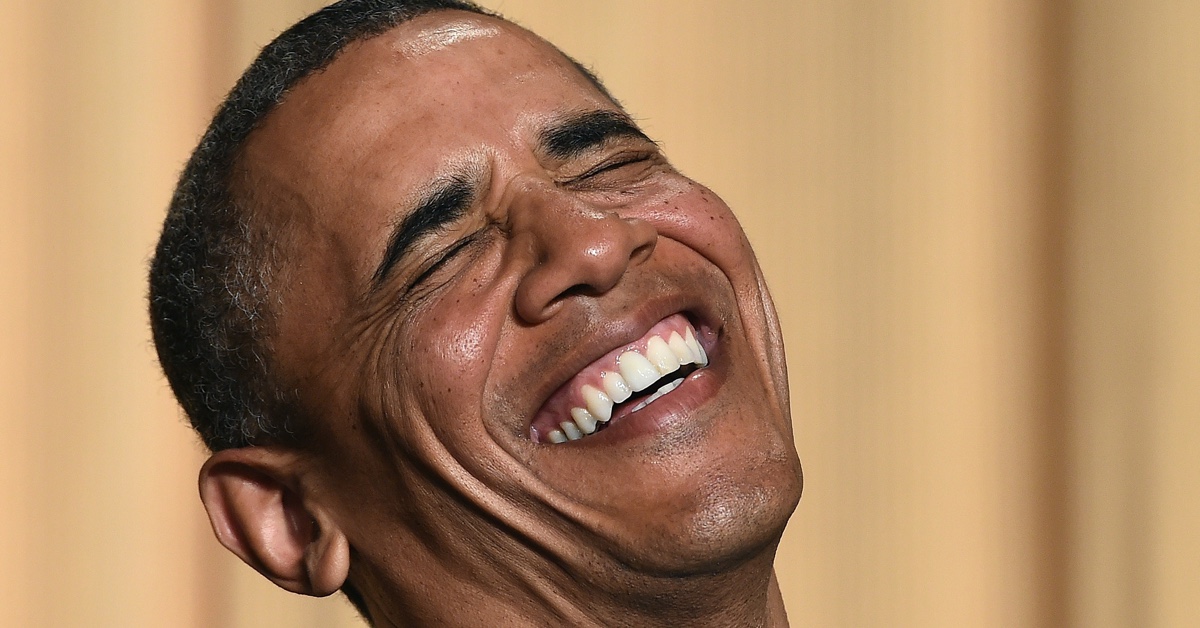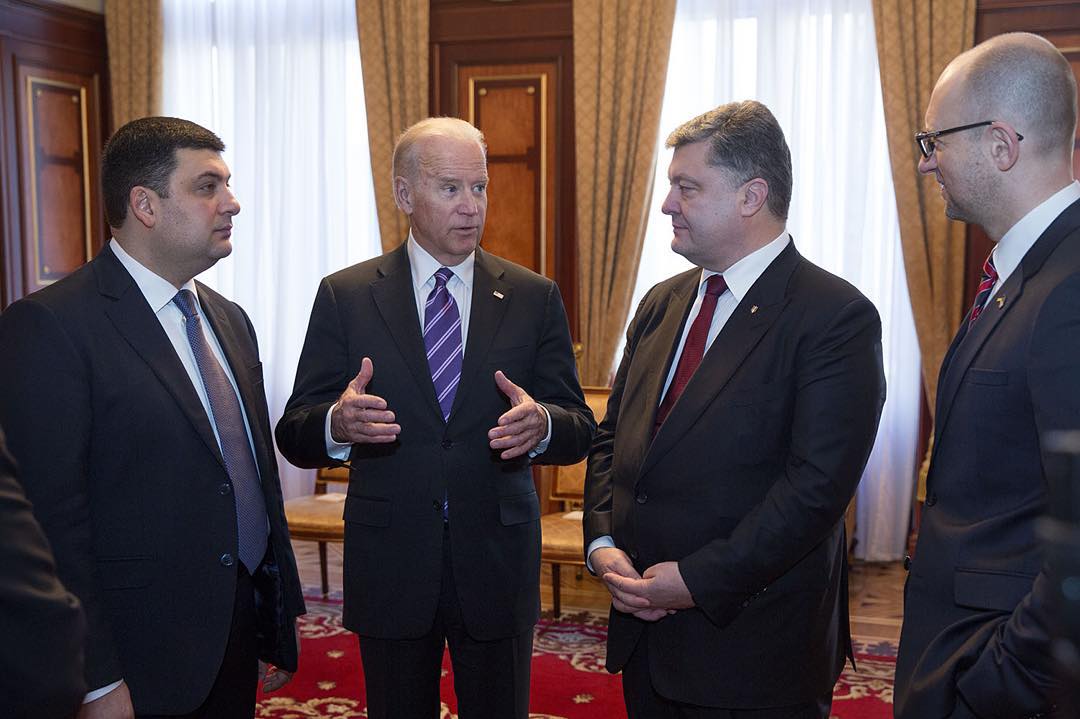Ukraine is taking back Russian-held territory, meter by meter, slogging through the summer into fall, at great cost: the Russian front on their territory would stretch from Norfolk to Augusta, Georgia if it was in the U.S.—to give you a sense of scale. Ukraine has made relatively tiny advances, mostly confined to a salient (a bulge) in Zaporizhia Oblast, propelling the names of tiny places like Robotyne and Verbove into news headlines.
Again, to lend a sense of scale, what was hailed as a “breakthrough” by Ukrainian forces is an area less than 10 miles wide, and less than 5 miles deep. Thousands of soldiers from both sides trade artillery shells, drone strikes, rockets and bullets, fighting over small patches blanketed with minefields, trenches, fortifications, and every manner of obstacle the Russians have thrown up to stop the Western-armed and frequently better-trained Ukrainians from taking their land.
This is, in the most European sense, a land war, possibly even more so than the great battles of World War II, with the exception of drones and Starlink replacing single engine fighters and field radios.
The Russians had nearly a year to prepare defensive positions, and according to most military analysts, have done so in a “multi-echeloned defense in southern Ukraine.” This is a classic military defense-in-depth scenario, where the defender exacts a maximum toll of attrition on the attacker, before falling back to another prepared position, while using longer-range weapons to cover fresh reinforcements for a counterattack, then repeating the cycle.
However, the Institute for the Study of War (ISW) noted:
Russian forces have instead expended considerable amounts of manpower, materiel, and effort to hold the forwardmost defensive positions in southern Ukraine and have only withdrawn to subsequent defensive positions at the direct threat of Ukrainian advances.
Going further, some “Russian and Ukrainian sources have acknowledged that some Russian counterattacks in the wider Robotyne area have been senseless.”
American military analysts Michael Kofman and Rob Lee recently assessed that Russian forces have underutilized the depth of their defense and have yet to execute “a true defense in depth” in which Russian forces trade “space for attrition” and that the Russian command’s decision to defend forward has allowed Ukrainian artillery units to attrit Russian forces. ISW concurs with this assessment.
The Russians are spending a lot of effort—measured in ordnance, equipment, and lives—to keep the Ukrainians from taking any measurable land, when in fact, there’s a lot of land that Russian forces can trade to offer a stronger defense, punishing Ukrainian units, but instead, they are taking great punishment themselves.
Why?
The “Russian military command may be ordering these counterattacks to buy time, but it is unclear how the Kremlin intends to use time bought at such a price,” ISW observes. “Russian forces appear to be unwilling to surrender tactical areas and are focusing instead on fighting for every meter instead of benefiting from the depth of their prepared defenses.” They are playing for time, intentionally throwing everything they have at Ukraine to keep the battle lines from moving, or at least having the appearance they are not moving.
The time play is fraught with risk for the Russians. Again, ISW, along with a fair consensus of western military analysts, believe there are significant reasons to believe in the possibility of a major breakthrough in the southern front lines. Once the hard shell has been broken, Russians lack reserves and combat power to maintain their in-depth defenses in western Zaporizhia Oblast, while Ukraine has not experienced attrition to that degree. Russian interior positions have not been as well-prepared and mined as the front-line fortifications, as well, the experts believe.
If these observations are true, then if or when Ukraine exhausts Russian defenses in the forward echelon (they’ve broken through the most forward positions and minefields), they will have room to maneuver freely, to encircle isolated Russian units, and to make a “deep penetration” rush toward the sea.
Again, all this is being played out in a 30 square mile bulge that both sides are pouring equipment and ordnance into. It’s clear that Russia is taking far more damage than Ukraine at this point, a change from the beginning of the counteroffensive, when Ukraine had to sacrifice infantry to pick its way, under heavy fire, through massive minefields.
Though we can observe what Russia is doing, we don’t necessarily know what they are planning, or what the fog of war is obscuring. However, what Russia is doing surely flies in the face of modern (or any) military doctrine for defense in depth. Russia’s top commanders can even be justifiably accused of madness.
Yet there might be some genius in the madness. Or at least, if not genius, the outlines of a dark strategy of disinformation and political intrigue. Here’s my speculation of what Russia is after.
The U.S. government is on the cusp of a damaging shutdown. It’s not because of some principled reformers standing against entrenched Washington power players, as in “Mr. Smith Goes to Washington.” No, it’s because of a tiny handful of extreme Republicans in the House of Representatives, fighting over less than five percent of the Brobdingnagian federal budget.
After Speaker Kevin McCarthy reversed his opposition to further aid funding for Ukraine, Rep. Marjorie Taylor Greene posted on X/Twitter regarding the House Rules Committee moving an appropriations bill including the aid, “[the] rule is the first step of advancing this blood money in Congress. Unfortunately, it looks like some of the House’s strongest conservatives are going to vote for the rule to help along.”
“Voting yes on the rule means more money for Ukraine,” she continued. “It’s that simple. No one who wants peace should vote yes on the rule to advance the bills. That’s why I’m a HARD NO on the rules package and a blank check for Ukraine!”
Of course, MTG is talking through her gym shorts, as usual. National Review editor Jim Geraghty dispelled the myth that the U.S. is writing a “blank check.”
Updated numbers reveal that when you add up all the military, humanitarian, and financial aid sent to Ukraine, Europe collectively is sending $2.22 for every dollar the United States has sent — dispelling the myth that America is getting stuck with the check for helping Ukraine.
As the deadline for government funding looms very near, Republicans like MTG, Dan Bishop, Andy Biggs, Eli Crane and Tom Cole have blocked aid to Ukraine. When the government shuts down (I’d say “if” but I think it will) on October 1st, a large part of the impasse will be over Ukraine. And that plays right into Vladimir Putin’s hands.
If the government shuts down, the Department of Defense gets no money. Our soldiers do not get paid (Veterans benefits continue, mostly unabated). American defense contractors don’t get checks for backfilling equipment that was shipped to Ukraine. At some point, the flow of weapons and ammunition slows, then stops.
It doesn’t have to stop for long—the logistics of war requires a huge amount of materiel moving at all times. Even the threat of it stopping has a chilling effect on battlefield commanders and their planning.
And to get the government moving again, there may be a “softening” of opinion toward standing with Ukraine. Couple that with some of Putin’s trademark nuclear threats, and a robust disinformation campaign—perhaps a nuclear “accident”—and there’s a definite reason Moscow is playing for time, and for showing that the war of attrition and slogging by the meter just isn’t worth it for distempered Americans, even if we’re not the ones doing the slogging.
The whole play is a Potemkin war that Russians are really good at. Make the war look like it’s a never-ending morass of death and destruction, amp up the rhetoric and end-of-the-world conflict woes (like the ones Elon Musk fell to), and let the political pressure of the far-right Trump-aligned Republicans push Congress just far enough to exploit a bigger rift, and Putin might find his foe stripped of its greatest chance of victory.
The Russians are playing for time to make their best counterattack, and it’s not to push back Ukrainian forces or to break through toward Kyiv. I think the best explanation is that the Russians have their weapons trained and loaded for Washington, D.C.
The bright spot is that I don’t think the Russian plan will work. I believe that the same sanity that infected Speaker McCarthy will eventually find its way into enough Republicans (maybe not MTG) on the far-right that the government budget will include aid for Ukraine when the government opens. And those who stood with the insane will pay for it at the polls. Most Americans still believe in liberty, and actually causing Russia to win is not going to be a popular position in 2024. Support for Ukraine is still strong, despite the Russian disinformation and polls to the contrary.
Russia is making a play for America to step back, and the Ukrainians know it. Our government will shut down, and while we’re navel gazing at the empty Capitol building, Ukrainian forces may very well break out and begin taking larger swaths of their homeland back. The Russian Potemkin war will be exposed and Americans will cheer. That’s my hope at least. It may—probably will—take longer and be far more difficult than my hopeful scenario. But I also believe that those who oppose continuing aid for Ukraine will be seen as the hacks they are.
Russia’s senseless play makes sense but only if we fall for it. I say, we don’t.
Follow Steve on Twitter @stevengberman.
The First TV contributor network is a place for vibrant thought and ideas. Opinions expressed here do not necessarily reflect those of The First or The First TV. We want to foster dialogue, create conversation, and debate ideas. See something you like or don’t like? Reach out to the author or to us at ideas@thefirsttv.com.

